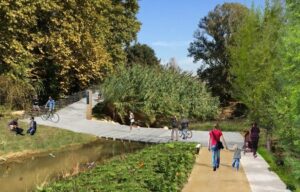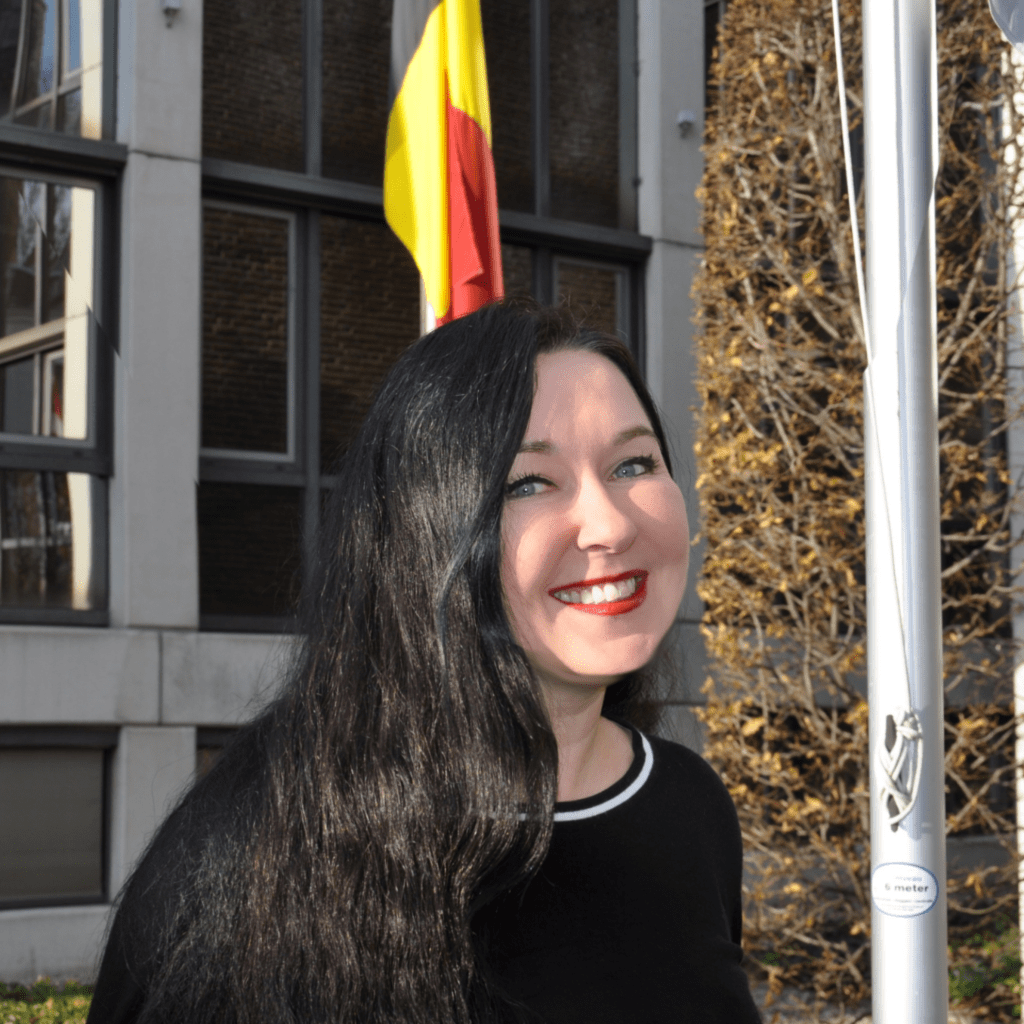We would like to thank the Office of Europe and International Strategy from the Directorate of International Relations of the Barcelona Provincial Council, the Directorate of Fundraising and Audit Services at the City Council of Barcelona, and the Department of European Funds and the National Recovery and Resilience Plan at the Municipality of Turin for their valuable suggestions and support offered for writing this blog post.
In this third blog of our series (the first blog, the second blog) on EU funds and best practices of projects in urban areas, we focus on NextGenerationEU, the instrument with the budget of €806.9 billion launched to facilitate the recovery from the Covid crisis. It exists in parallel to the Multiannual Financial Framework (MFF) 2021–2027.
All projects we describe represent examples of best practices that can inspire other cities in EU Member States, as they contribute to achievement of the main European Commission 2019–2024 objectives and key pillars of the Recovery and Resilience Facility (RRF), such as the green transition and digitalisation, which remain the key topics in the current European Commission 2024–2029 objectives. In addition, they contribute to the socio-economic development of urban areas, generating new jobs, improving access to culture and education, and developing green infrastructure.
The Recovery and Resilience Facility (RRF) is the largest component of the NextGenerationEU (total budget: €650 billion). Member States had to allocate the resources until the end of 2023, with a final spending deadline at the end of 2026. We believe it is important to showcase the potential of RRF resources to transform urban areas and improve the quality of life of their residents.
Projects financed under the RRF fall within six pillars: (1) green transition; (2) digital transformation; (3) smart, sustainable, and inclusive growth; (4) social and territorial cohesion; (5) health, and economic, social and institutional resilience; (6) policies for the next generation. In this blog, we will only concentrate on the first three pillars.
Green transition
This pillar finances green technologies and capacities, including among others projects on sustainable mobility (€87.9 billion). A substantial amount of these funds aims to decarbonise railways and enhance rail connectivity. More specifically, €26.8 billion is assigned to urban mobility, seeking to modernise public transport fleets, adopt emission-free vehicles, and build new cycle paths.
Moreover, under this pillar, projects improving the energy efficiency of buildings (€81.1 billion) are being financed. This includes interventions to lower energy demands by public and private buildings, particularly by improving insulation, and introducing more sustainable and efficient heating systems. Actions aimed at boosting long-term energy savings in residential buildings also contribute to reducing energy costs for more disadvantaged households.
New Bologna tram line
An illustrative example of RRF funding used to enhance urban mobility can be found in the Italian city of Bologna. The RRF is contributing €398.8 million (total cost: €511.3 million) to the construction of a new 16.5 km tram line. The main goal of the project is to reduce the number of passengers using private vehicles each day by up to 15 000, by encouraging more sustainable ways of travelling. The construction of the new line, which started in 2023 and will finish in 2026, will be equipped with the highest technological standards of safety, comfort, and efficiency.
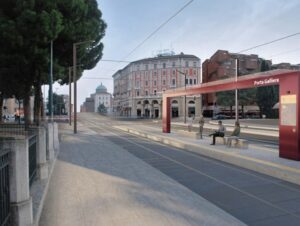
Copyright: Archivio Comune di BolognaRehabilitation of the industrial complex of Palo Alto in Barcelona
The Public Buildings Rehabilitation Programme (PIREP) of the Spanish Recovery and Resilience Plan financed the rehabilitation of Barcelona’s industrial complex of Palo Alto, in the Sant Martí district. The project was implemented between 2022 and 2024, with the total budget of €4.3 million (the RRF contribution being over €1.3 million). Its main achievement was to transform a heritage industrial building into an energy-efficient incubator for companies, with a reduction in primary non-renewable energy consumption by more than 30%. The improvement package of the project aimed to achieve maximum energy efficiency while maintaining comfort for users. These included the renovation of the outer insulated enclosure and the installation of a high-efficiency air conditioning system, heat recovery units with more than 74% efficiency, smart meters, and a photovoltaic solar cover for electricity. In addition to energy and CO2 savings, the project also improved indoor air quality and the acoustic comfort of the building. The new Palo Alto complex represents a self-sufficient and healthy creative space which strengthens the quality of life and economic vitality of the neighbourhood while reinforcing Barcelona’s climate leadership.
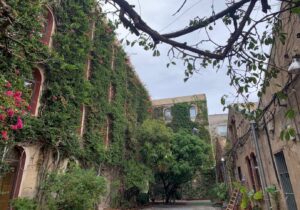
Image provided by Barcelona City Council
Image provided by Barcelona City Council
Digital transformation
This pillar finances projects aiming to digitalise public services, reduce administrative burdens, and simplify the relationship between citizens and public administrations (€22.9 billion). Additionally, they aim to improve connectivity (€13.6 billion), for instance, by expanding broadband, 5G, and Wi-Fi networks, in both urban and rural areas.
Given the importance of the healthcare sector during the COVID-19 pandemic, the RRF also includes substantial investments in health systems (€42 billion). Examples of this are the digitalisation of healthcare delivery, the improvement of disease control and prevention, and the strengthening of mental health services.
Digitisation of the Teleassistance (Local Remote Assistance) Service in the Province of Barcelona
The Local Remote Assistance Service project of the Diputació de Barcelona is addressed to residents of 310 municipalities of the Province of Barcelona, who are at risk for various reasons (such as age, loneliness, disability, dependency) offering the possibility to communicate from home with professionals in case of need, 24 hours a day, 365 days a year. With the RRF financing This project was implemented between 2022 and 2024, and financed with €6.9 million from the RRF, covering the total cost of the project. With this financing, the corporation developed the digital transformation of the service, aiming to move towards predictive and cognitive teleassistance. Such tools anticipate needs and risk situations, allowing people to remain in their homes safely and independently. The new terminals and sensors will help to detect early changes in habits that may indicate physical or mental deterioration, and thus offer better care and guarantee equitable access to these services.
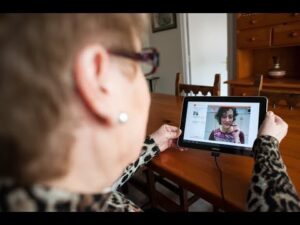
Image provided by Barcelona Provincial Council
Smart, sustainable, and inclusive growth
This pillar supports projects in the domains of culture (€11.7 billion), research and innovation (€55.6 billion), and small and medium-sized enterprises (€78 billion).
Public libraries in Turin
The RRF finances an Integrated Urban Plan entirely for the city of Turin (€113.3 million). The implementation of the plan started in 2022, with all allocated resources to be spent by 2026. It includes several urban regeneration actions, whose main goals are to make culture more accessible, tackle material and social deprivation, and improve public spaces. An important part of the plan is the refurbishment of 18 public libraries across the city and the construction of a new one. In addition to bringing culture and reading closer to residents, especially in more peripheral and vulnerable neighbourhoods, the plan finances regeneration works in the vicinity of the libraries. This consists of enhancing green areas, marketplaces, and sports areas to encourage the inclusion of residents. Moreover, a pre-existing mobile library service, called ‘Bibliobus’ will be expanded, adding new stops throughout the city where citizens can meet and borrow books.
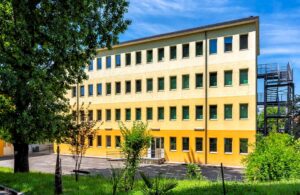
The Rita Atria library. Source: City of Turin www.torinocambia.it
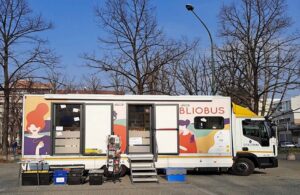
Bibliobus. Source: City of Turin www.torinocambia.it
In addition, thanks to additional funding from the Italian government, a new central library is under construction (total cost: €105.7 million). The project for the new library, which is expected to open in 2026, is inspired by modern public libraries in other European cities. It focuses on the redevelopment of indoor and outdoor spaces across a total area of 20 000 square metres. The new central library will provide a dynamic and interactive space, with co-working spaces and laboratories. It will represent a large, accessible, and inclusive cultural centre, welcoming a diverse range of users and engaging with the entire city.
Tourism and sustainability in the Province of Barcelona
The Provincial Council of Barcelona aims to restore and enhance the region’s natural and cultural heritage by investing in environmental protection and sustainable tourism promotion. Three RRF-funded projects (Vies Blaves, Espais Naturals, and Costa Barcelona) supported the development of a more sustainable and intelligent tourism model. They focused on strengthening territorial cohesion through restoration, conservation, digitalisation, and raising visitor awareness. The total budget of the three projects, implemented between 2022 and 2024, was more than €10 million and was fully covered by the RRF.

Image provided by Barcelona Provincial Council
Image provided by Barcelona Provincial Council
Multi-device OTT (over the top) platform in the Province of Barcelona
To promote pluralism and cultural diversity in local audiovisual content and fulfil the mission of public service, the Province of Barcelona has launched a multi-device OTT platform that combines linear broadcasts of local televisions, live or in catch-up mode (recovery of contents), with an offer of content on demand. With the implementation of Big Data and AI tools, the aim is to resize the OTT platform by providing a more competitive service for the local audiovisual world. The platform also allows the beneficiaries, small and medium-sized enterprises, to expand their capacity and efficiency in disseminating content and implementing new mechanisms for economic growth. The project was implemented between 2022 and 2024, with the total budget of €2.1 million, fully covered by the RRF.

Image provided by Barcelona Provincial Council
Conclusion
In our third blog on best practices of projects financed by the RRF in urban areas, we presented inspiring examples which can be developed and implemented in other cities or provinces across EU Member States. The instrument launched in response to the COVID-19 pandemic allows urban and rural areas to implement projects improving the quality of their residents’ lives in the long term, as well as economic development at local and regional levels. This can be achieved, for example, by expanding environmentally-friendly mobility, promoting sustainable tourism, and bringing libraries and culture closer to citizens.
Stay tuned for our related upcoming courses
Declaration of AI assistance: generative artificial intelligence tools have been used to review and correct wording and potential spelling errors in this blog. The final analysis, arguments, critical insights, and conclusions are the result of the authors’ work and remain under their sole responsibility.
The views expressed in this blog are those of the authors and not necessarily those of EIPA.

